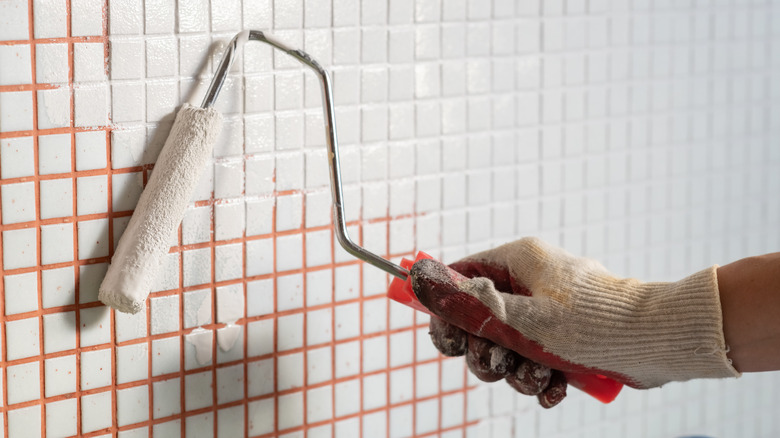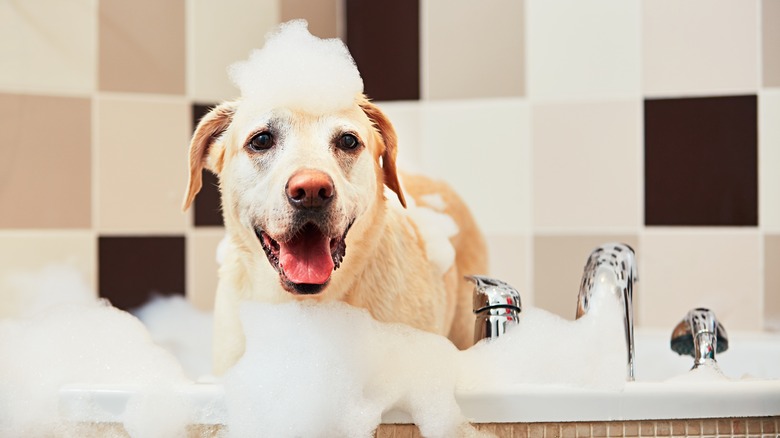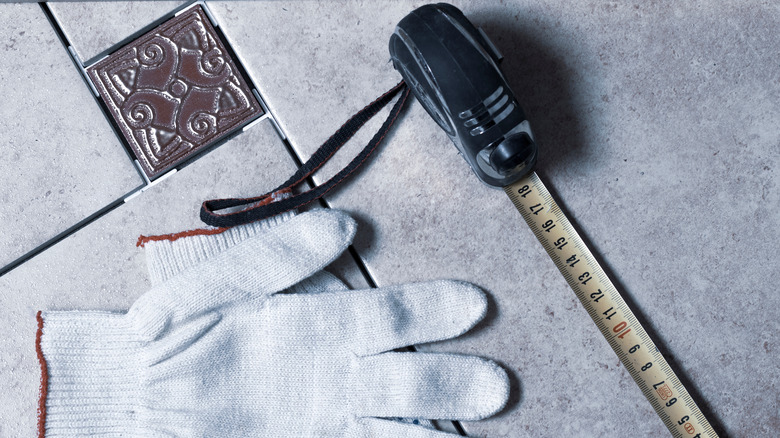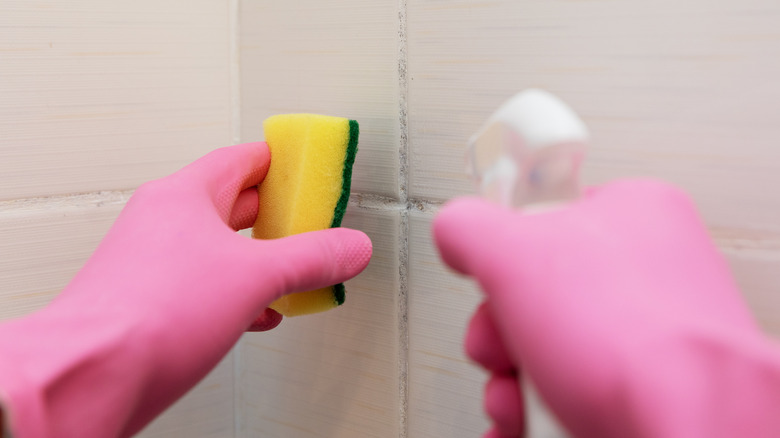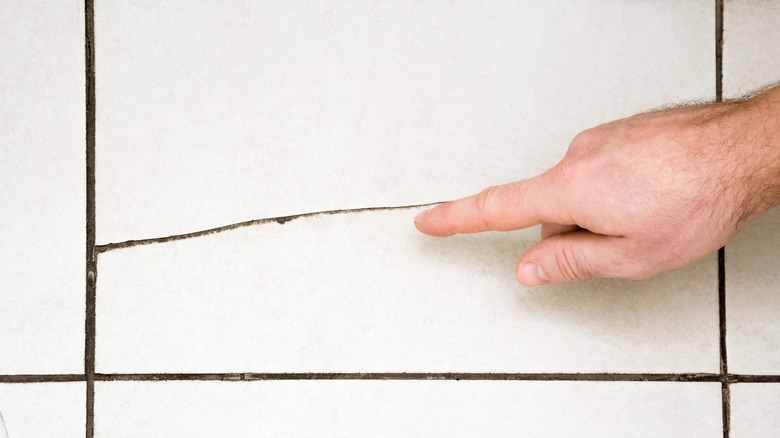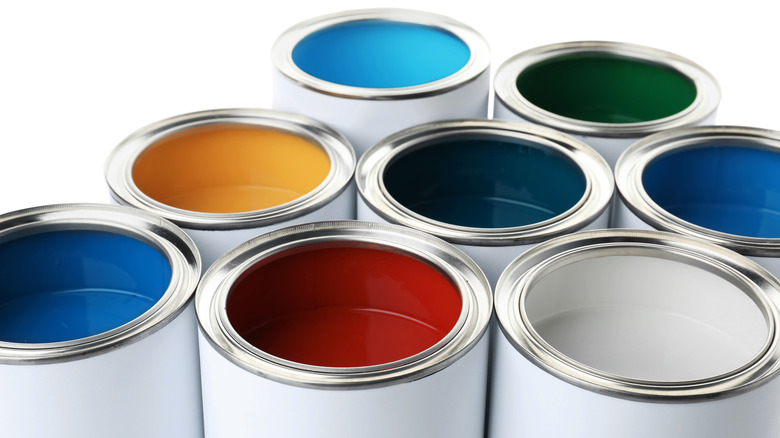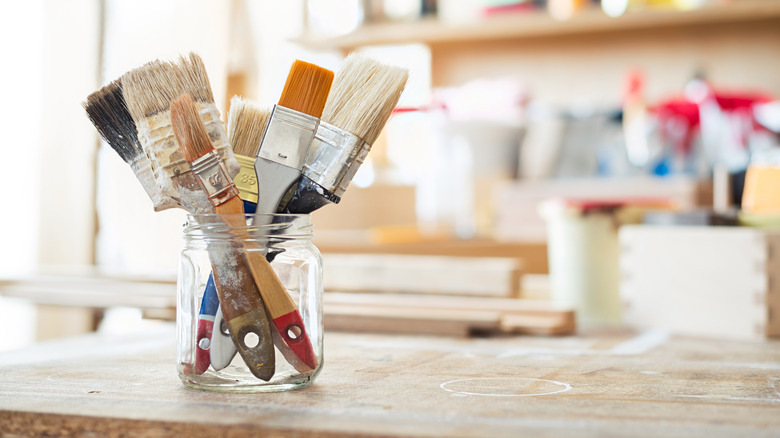Everything You Need To Know Before You Paint Tile
So, you want to update your old tile, but replacing it would break the budget and be a bigger task than desired. Can you paint over tile? Should you even try? The answers are yes and yes! You absolutely can paint tile with just a little prep work and the right materials.
Preparing properly for the project is a big part of the job and is crucial to a beautiful and long-lasting finish. Whether you're looking to coat the entire face of your tile in a single color or apply a stenciled design, there are things to consider before jumping in. As with any DIY project, you'll want to think about the finished look and durability you're hoping to create, the materials you'll need to complete the job, and the cost and time involved, which can easily be several days from start to finish due to preparation steps, primer cure time, and number of coats applied.
Also, if you're planning on selling your home, knowing how painted tile can impact your sale value is important too. According to ReMax, unusual or quirky tiling is a no-go. The truth is that good quality tile can increase the value of a home. Painted tile, especially if not done well, can hurt the value. So, if a home sale is in your future, it might be best to call in a professional for a quote to replace or repair damaged tile. Still eager to paint? Consider these things as well...
Location and type of tile
Tile is a popular choice for water-equipped rooms due to its moisture-resistant quality. Paint, on the other hand, doesn't always do well with getting wet repeatedly. Ceramic, porcelain, unglazed quarry, or natural stone can all be painted whereas glazed quarry and glass tiles will have adherence issues. Maintenance will eventually be necessary on painted tiles that are exposed to a lot of moisture, but according to ShowerPlusBath, meticulous preparation and quality work can yield a durable finish despite these challenges. So, if you're okay with the upkeep, go ahead and roll on the paint!
Plan your budget
Painting is an economical choice, but still you'll need to know how much primer and paint to buy for your project. In general, one gallon will cover 250 to 350 square feet, and using the paint calculator tool on Kilz can help determine your needs. You can also do the math manually by measuring the length and width of the area and multiplying those together to get the square footage. Also, tile painting kits are available, but are often pricey and your project might require more than one kit. Buying your primer and paint separately might be less expensive.
Scrub-a-dub-dub and then scrub some more
The cleaner, the better. MakingPrettySpaces described it best when they said tile does not want to be painted and has to be tempered into readiness. Start by cleaning and scrubbing the grout and surface. For stubborn mold or soap scum spots, according to SunriseSpecialty, try using a toothbrush or coarse sponge covered in a paste made of one part vinegar and two parts baking soda. There are plenty of abrasive cleaners on the market that can help with this as well.
Repair any damage
Next, repair any cracks or chips in the surface. Home Depot suggests applying caulk with a putty knife to the damaged areas, making sure to smooth it out and letting it dry completely before moving on to the next step. Scruff it up. Unless specified, all tile is glazed. For paint to adhere properly, glaze needs to be removed by hand or with handheld power sander using sandpaper with a minimum grit of 100. Once complete, it's super important to thoroughly clean up all dust and debris using a damp cloth and vacuum.
Choose the right products
Selecting the right primer and paint for your type of tile is key. The City Painters recommend Zinsser Bullseye 1-2-3 Plus or Kilz Adhesion Interior/Exterior primers for tile use. Epoxy or tile paint work well, but require a mask and proper ventilation for respiratory safety. Acrylic latex paint is also a less odorous option that offers plenty of color options, but may not adhere as well. When painting is complete, a sealant is necessary to protect the finished product. Apply two coats of water-based urethane sealer a few days after the paint has dried.
Enjoy your new masterpiece
After several days of bathroom or kitchen upheaval, your hard work will have paid off. Just remember to inspect it regularly for any bubbling or peeling so that any issue can be handled promptly. It's a good idea to keep a small amount of the primer, paint, and sealant you used just in case it needs a touch up, per Consumer Reports. Your tile looks amazing and you can enjoy it for years to come.
